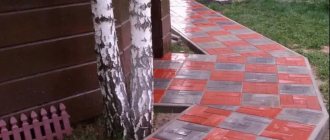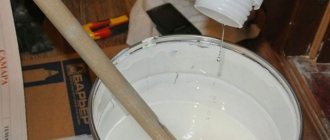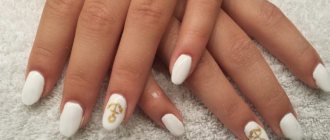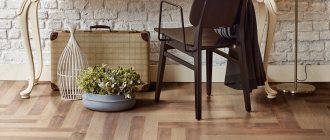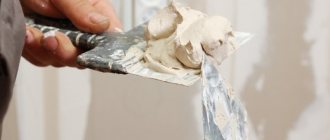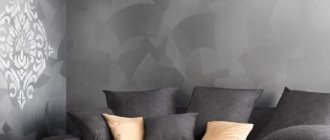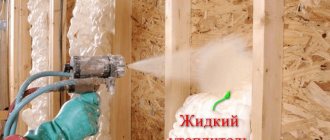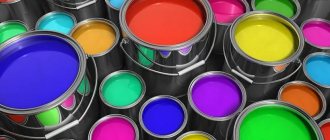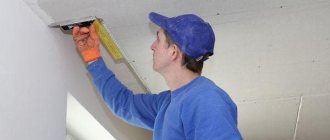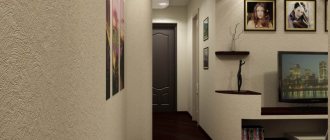Facade paint must have properties that allow the coating not to deteriorate, maintain decorativeness, strength, and durability.
For a concrete coating, you must choose a paint that will have good adhesive qualities.
Paint for exterior painting on concrete surfaces protects the wall from moisture and the occurrence of mold and fungi.
Therefore, the main indicator when choosing facade paint for exterior work should be its quality characteristics.
Characteristics of concrete as a base for painting
The dry residue from a cement-based mortar has high strength and resistance to mechanical stress. The material is characterized by low water absorption and weak adhesion. The surface is usually smooth and dense despite the porous structure.
Surface preparation
When working with concrete paint outdoors and indoors, it is important to ensure intermediate drying. The only exception is the stage of removing solid contaminants, protrusions and weak areas, and old decorative finishes. If there are cracks on the surface, they need to be repaired.
The following actions are aimed at protecting the base:
- Foci of biological damage . Such places must first be cured using means to destroy fungus, mold, bacteria and a brush with running water. Then the dry surface is impregnated over the entire area with antiseptics.
- Traces of rust . They can occur on the surface of metal-reinforced concrete or when hardware is used. Corrosion is removed mechanically and using special liquids. Next, the areas are covered with anti-corrosion primer. Treatment with a solution of copper sulfate (up to 15%) is also acceptable.
Copper sulfate Source kvedomosti.ru
- Soot and grease . They are subject to mandatory removal. There are ready-made tools for this on trading platforms. Or you can dilute about 500 grams. soda ash in a bucket of clean water. Another option is a soap solution.
Painting concrete is not always carried out after filling the pores and leveling the surface with plaster and putty. But it is necessary to work with cracks in any case in order to stop further destruction of the slab. To do this, the area must be saturated with strengthening soil and the depression filled with a repair compound. It is better if it is a cement or polymer based solution.
There is an opinion that the surface must be completely sanded to a smooth state so that flaws in the form of scratches from abrasive are not visible. This statement is partly incorrect, since the painting technology implies better joining with a rough base. You just need to use a medium-grit sandpaper and work in small circular motions without applying too much pressure. Most paintwork materials, when applied in two layers, fill microcracks and hide minor defects.
Concrete grinding Source remontkrovly.ru
The final step at the preparatory stage is treating the surface with a primer. The choice of material is based on the operating conditions of the concrete base (indoors or outdoors, with constant or variable humidity, temperature). It is also necessary to take into account the paint base that will be used for painting. In any case, there must be applicability to mineral surfaces, deep penetration and high adhesion.
What paint is best for concrete?
An indicator when choosing a painting material to cover a concrete facade is the ability of the paint to provide vapor permeability. It is important to pay attention to the thickness and consistency of the composition.
For a concrete base, you can choose paints that have a high level of mechanical resistance, namely, water-based epoxy. Paints with a textured structure have better vapor permeability.
In addition, it is recommended to choose paint that reflects light as much as possible: this will minimize the likelihood of fading.
Overview of the main components of paintwork materials
Materials are classified according to their purpose and composition. It can be a wear-resistant concrete paint for exterior, interior or universal use. The nature of paints and varnishes can be organic or aqueous. Binders and dyes also differ.
For example, the most inexpensive paints are made using drying oil (oil) or alkyd resin. Today they are used less often for concrete than other materials due to their short service life. It's only 1-2 years. And the application is limited to walls, since the strength of the film is low. But there are significantly improved paints with more complex formulations.
Paint Ma-15 Source regmarkets.ru
Acrylic
This concrete paint is suitable for exterior and interior use. Depends on whether the composition is prepared with water or solvents. The former do not emit toxins and are suitable for use in rooms without ventilation. Pigments, as a rule, are of natural origin: dolomite, talc, chalk. Organic materials are applied to facades and road surfaces, as they are highly resistant to stress and frost. But the smell takes a long time to dissipate and the coating takes longer to dry than its aqueous counterpart.
Positive qualities also include elasticity, durability (up to 20 years), moisture resistance and retention of shape and color when exposed to ultraviolet rays. Colors can be rich, and the film is breathable with varying degrees of gloss. Wet cleaning with soapy cleaning products is acceptable. Apply paint in 2 layers. Consumption reaches 200 g/sq.m.
Acrylic enamel Source prom.st
See also: Catalog of stone house projects for which paint was used for finishing
Vinyl
This paint is often compared to acrylic paint, as the resins are similar in nature and characteristics. But the first is inferior in terms of moisture resistance, inertness to acids, vapor permeability and durability (about 7 years). These compounds also have a rich color and form a durable film. Eco-friendly concrete paints are suitable for exterior and interior use.
The relatively low cost is justified not only by lower quality. The paint contains a large amount of solvent. This fact has a negative effect on the drying of the facade in dry or windy weather, since the evaporation of the base occurs too quickly. Shrinkage is also observed, which prevents finishing of an already painted surface. But a thick layer of material allows you to avoid secondary application. The film forms within two hours. Consumption averages 130 g/sq.m.
Vinyl paint Source pinimg.com
Latex
It is worth noting that synthetic latex can be presented in the form of an aqueous dispersion with styrene-butadiene, polyvinyl acetate, acrylate or urethane copolymer. That is, in essence, acrylic paint is a subtype of the group of latex paints and varnishes. But materials on trading platforms are considered as different compositions.
The general characteristics of the material come down to versatility, that is, you can paint the facade and the children's room. The coating breathes, dries quickly, does not allow moisture to pass through, can withstand cleaning, does not smell, and does not contain metals or toxins. Pigmented compositions remain rich for a long time. The film is elastic and can have different degrees of gloss. Apply in 2-3 layers. The average consumption is 180 g/sq.m.
Latex paint Source skidka-kazan.ru
Polyurethane
The main component is a petroleum refining product. Paintwork materials with elastomers are manufactured as independent compositions and for mixing with a hardener for interior and exterior work in the presence of a canopy. This is due to long drying (up to 14 days). The film for a single-layer coating is 1 mm, which is enough to fill minor defects in the base. Wear-resistant paint for concrete is highly resistant to mechanical stress and water. But under the influence of the sun it fades.
Working with polyurethane paint has its own characteristics. Thus, adhesion to concrete can be improved by treating the base with diluted paint. To do this, add 15% of the total mass of epoxy primer to the composition. And between the layers a little quartz is poured with a fraction of up to 0.3 mm. Consumption is 200 g/sq.m. It is important to monitor the shelf life of packaged paint, which may be limited to six months. The service life can exceed 10 years.
Alkyd-polyurethane paint Source megastroy.com
See also: Catalog of companies that specialize in paints and finishing materials
There is an option for manufacturing polymer paint such as a self-leveling floor using polyurethane. This is a liquid composition that meets high requirements in terms of strength, wear resistance and water resistance. The coating can be single-layer, as the thickness can reach 8 mm. In this case, cracks up to 2 mm wide are filled, differences in the plane up to 4 mm high by 3 meters are covered. Clean tools with acetone, solvent or xylene.
Silicate
Potassium liquid glass is used in the production of this mineral paint. Dyes can be metal oxides or alkali-resistant components. The material has high adhesion to concrete, vapor permeability, strength and resistance to high temperatures. The coating is smooth and protects the surface from corrosion and bacteria and mold.
Silicate paint Source stpulscen.ru
Among other things, the color saturation can be any. No fading occurs under sun exposure. But the paint is not plastic, which makes it difficult to paint over unsmooth concrete with cracks. The composition must be applied to cleaned concrete, since the compatibility of paints and varnishes with analogues is practically non-existent. Indoor use is not recommended due to the content of zinc and other metals. The coating lasts for about 20 years. Consumption reaches 250 g/sq.m. The second layer is applied a day later, it dries for almost 10 hours.
Rubber
The paint consists of water (5%), the rest is acrylate latex and additives. As a result, the covering material has high adhesion and elasticity, vapor permeability, resistance to different temperatures, humidity, and mechanical stress. When wet, the coating does not slip, which explains the use of wear-resistant paint on concrete for exterior work and floors inside the building.
Rubber paint Source obetone.ru
How to paint concrete surfaces
No matter how expensive and high-quality the concrete paint for external surfaces is, if you do not adhere to the rules for performing painting work, it will not live up to expectations. And the manufacturer is not to blame in this situation. What recommendations should be followed to ensure reliable concrete painting?
Choosing a paint brand
A very important criterion; the final results depend on the correct choice. Before purchasing the material, carefully read the instructions. In doing so, pay attention to the following points:
- on what basis is the paint made?
- operating temperature conditions;
- attitude to ultraviolet radiation;
- chemical composition;
- does the material have plasticity;
- wear resistance.
Quick-drying paint for concrete "Unikom"
If you live in difficult climatic conditions, then the paint should be of the most expensive and high quality. Don't skimp on the cost, repainting concrete will cost significantly more than purchasing paint at a high price. Additionally, familiarize yourself with the technology for preparing the dye and the temperature conditions at which painting work can be performed.
Paints for concrete
Prices for various types of construction paints
Construction paints
Purpose of concrete structures
Elements of fencing, garden paths, parts of facade walls and landscape design are made from concrete. Concrete paths are used in the most difficult conditions; to paint them, you need to use only deep penetration dyes. For other structures, you can use paints that form only the top layer.
Practical advice. If you plan to make concrete paths in the garden, then issues with their painting should be resolved at the stage of preparing the solution. Various mineral dyes must be added to the mixture; this is the only way to guarantee long-term use of concrete without changing the original characteristics. To reduce the cost of construction, fill them in two layers. The first layer is made of ordinary concrete, and the second with dyes. The thickness of the second layer is within three to five centimeters. This is quite enough to achieve the required strength, and a three-centimeter layer of colored concrete does not wear off for many decades.
Freshly poured concrete paths, first layer without dye
Filled color layer, the design is made using a stencil
Painted concrete path
This method is considered optimal for one more reason - concrete paths constantly absorb moisture from the ground, and the presence of moisture has an extremely negative effect on adhesion performance. There are, of course, modern primers that allow you to more or less reliably waterproof paint from wet concrete, but in terms of their effectiveness they are much inferior to the above recommendation.
All other concrete structures are operated under more gentle conditions, the requirements for painting are less stringent, and any dyes can be used for external work.
Surface preparation
Concrete has a negative property - insufficient strength of the thin top layer. Even after running your hand over the surface, microscopic particles of material remain on it. This characteristic does not have a negative impact on durability, but can create problems during painting. To minimize negative effects, the concrete surface should be thoroughly prepared before painting.
- Level the concrete plane. It is necessary to seal not only cracks and depressions, but also to level out sharp protrusions. Each sharp protrusion is a place where loads are concentrated; no modern dyes can withstand them and will certainly be damaged. And then through the holes, water gets between the concrete and the paint and a continuous peeling process begins.
Scheme for repairing concrete walls with repair mixtures
Work on embedding reinforcement in concrete walls
- Clean the surface. If there are oily stains on it, that’s a big problem. Detergent will not help get rid of them, as some inexperienced craftsmen promise. Why? Firstly, the oil penetrates very deeply into the concrete, making it almost impossible to “get” it out of there. Secondly, effective detergents contain acids or surfactants. Both the first and second have an extremely negative impact on the strength of the material. In these places it becomes brittle and gradually crumbles under minor loads, and as a result, the paint will definitely fall off in the cleaned area. This means that it is impossible to clean the oil from the thickness of the concrete layer, and the remaining oil will constantly rise to the front surface due to the capillary effect. The consequences are just as negative - the paint in these places will certainly peel off. If an oily stain is found, it must be removed along with the concrete to a depth of 2–3 centimeters. Next, fill the hole with fresh mortar, wait a few days until it hardens completely, and only then continue painting.
Applying repair mortar
How to prepare the surface? First of all, let’s say that pure concrete is very rarely painted; the top leveling layer is subjected to such actions. And it is made from a cement-sand mixture. It needs to be prepared “fat”, the proportions of cement and sand are approximately 1:2. By increasing the amount of cement, the sand is held much more firmly. After the screed has hardened, it should be thoroughly rinsed with water under high pressure.
Cleaning the wall
Don't be afraid that high pressure may wash out the grooves; if this happens, you're in luck. This means that we managed to find a weak point and can take timely measures to eliminate it. Otherwise, it would still show itself, and it would be necessary not only to fill the recess, but also to renew the paint. But it will not be possible to make the patch invisible; it will be significantly different from the old paint for many reasons.
Primer
Applying primer to concrete
Be sure to use high-quality special primers.
On concrete surfaces, primers perform two tasks: they bind together the smallest particles of material and prevent moisture from getting between the concrete surface and the first layer of paint. Depending on the base, there are two types of primers:
- polyurethane. They perfectly protect the concrete surface from dust and prevent moisture from penetrating between the paint and the surface. They have high adhesion rates with most types of paints for external use;
- epoxy. More expensive option. Unlike polyurethane, they do not penetrate very deeply, but have better physical strength. In terms of price, they belong to the expensive segment.
Choose a primer based on its characteristics and the specific location where the paint will be used.
Facade primer
Primer concrete-contact
Acrylic deep penetration primer for interior and exterior use
Prices for deep penetration primer
Deep penetration primer
Technology of applying paint on concrete for exterior use
Do not violate the manufacturer’s recommended technology for preparing the material. As for consumption, it will be significantly more than what is written on the packaging, buy paint with a reserve.
Instructions for painting concrete walls
When applying paint, it must be rubbed very carefully into the surface. The best option is to use an air gun. Paint particles fly out of the nozzle at high speed, hit the surface hard and fill all micropores.
Compressor painting
An acceptable option is paint brushes. With their help, you can apply paint with force, which will also ensure reliable adhesion. Disadvantage: the work takes a lot of time and physical effort.
Another problem is painting concrete with brushes. While rubbing the material into the surface of the structure, grains of sand may flake off and will have to be removed. To do this, you need to wash the brush in a clean solvent, which takes time. And the percentage of solvent in the paint is constantly increasing, some liquid will always remain on the fibers, the new place needs to be covered with an additional layer, otherwise the difference in shades will be noticeable.
Applying paint with a brush
Painting with a brush
How to paint a facade
The worst option is to use rollers. The paint is not rubbed into the concrete, but only spread over the surface. Rollers, of course, are faster and easier to work with than brushes, but professional painters strongly advise against painting concrete surfaces with them, and not just those located outside the building.
Painting a concrete facade with rollers
The general purpose of all paint and varnish coatings is not only to give the treated surface a certain look and color, but also to isolate it from adverse external influences
The nuances of painting concrete surfaces
Prices for paint sprayers
Spray gun
Video description
You can clearly see the rubber coating from the video:
Epoxy
Waterproofing paint for concrete floors can be cold or hot cure, two-component, powder or aerosol. Additions include acrylic or phenolic resin, quartz or glass in the form of dust. They have a positive effect on resistance to ultraviolet radiation and mechanical stress.
The composition is used for painting concrete outside or inside a building, in utility rooms and medical institutions. Self-leveling floors are also coated with epoxy paint to impart rigidity and hardness to the surface. The coating protects the base from corrosion, moisture, biological and mechanical damage. You can clean using any detergents. Apply the composition in 2-3 layers with intermediate drying for up to 24 hours. Consumption is on average 250 g/sq.m. The service life can be 20 years.
Epoxy paint Source purplemint.ru
Why paint concrete
Concrete structures located on the street are exposed to the adverse effects of external factors around the clock:
- precipitation (rain, hail, snow);
- UV radiation from the sun;
- mechanical damage and stress;
- freezing of ice and subsequent thawing;
- condensate
The weaknesses of concrete as a structural material for the construction of buildings and structures include hygroscopicity - the tendency to absorb 10% of moisture from the atmosphere. Accumulating, even minor damage over time leads to the destruction of such a durable material as concrete.
Wear-resistant paint helps to avoid damage by performing decorative and protective functions. The coating composition is designed to solve the following problems:
- Extend the service life of building materials.
- Improve the decorative qualities of the surface.
- Hide defects, cracks, and uneven surfaces.
- Increase electrical insulation performance, which is important for the foundation of buildings.
- Protect from water and the harmful effects of environmental factors.
- Repel pollution.
Classification of coatings by purpose
You can often find an inscription on the packaging that states the versatility of the paint. This can mean 3 different contents. Either we are talking about the base being processed (concrete, wood, glass), or about applicability for work inside and outside the building, or for painting walls, ceilings and floors. Therefore, when choosing one or another composition of paints and varnishes, you must read the detailed instructions.
Let's consider the basic requirements for concrete paint depending on the object being painted:
- Floor . Due to constant or periodic loads on the base, materials must have high strength, resistance to abrasion and wet cleaning. These criteria are met by compositions with acrylic, polyurethane, alkyd or epoxy resin, and liquid glass.
- Foundation . To the list of paints for concrete floors, you can add silicone, which perfectly protects the porous base. What is important here is inertness to weather conditions, mold bacteria and elasticity.
- Road surface and paving slabs . On the street, extreme conditions with changes in temperature and humidity are added to the mechanical load. Alkyd, polyurethane and rubber paints cope with this.
Painted path made of concrete slabs Source pinimg.com
How to choose a dye
The product for coating a concrete surface is selected based on the task that the wear-resistant composition is designed to solve:
- Thick consistency façade paint will help hide unevenness and defects in porous, unprimed concrete.
- To give an aesthetic appearance to a concrete building, painting is done with acrylic or latex composition.
- Epoxy paint is designed to strengthen the structure, giving additional strength.
- The base parts of buildings and structures are coated with substances with increased wear resistance - acrylate, latex or acrylic compounds. Such paints have special marks on the packaging - “Socle”.
Dyeing technology
There are three ways to add color to concrete structures. The most durable option is pigmentation of the solution at the stage of its preparation. In this case, subsequent updating of the finish will not be required, since the appearance will remain unchanged under the influence of the sun or walking.
Solid coloring of concrete Source synrgi.dk
Another technology is called deep. Here, the components of the paints used enter into a chemical reaction with the substances contained in the concrete. The result is a single surface that is resistant to dirt, moisture and abrasives. The process is complex and expensive, but is justified by its durability.
The third option is the classic application of paint, which forms a protective film. Otherwise, the technology is called surface technology. The result is inferior in strength and service life to the other two, but costs less, the choice of materials is richer and implementation is simpler.
Technology for painting a concrete facade: instructions and video
Is it possible to paint aerated concrete without plaster?
The classic algorithm for preparing a concrete surface for subsequent painting is not always appropriate, especially if painting the walls is only a temporary measure to create the final appearance of the house.
If plastering of the walls is not planned, it is necessary to understand that the porosity of the facade contributes to a high absorption of moisture, which means the dye consumption can increase by five times.
In this case, a mandatory preparation step will be priming the surface with several layers of deep penetration soil solution. Two or three layers of primer will reduce the absorbency of the material, which will significantly reduce dye costs.
After priming, any suitable material for facade work can be applied to the surface. The main thing is to pay attention to the dye consumption and take at least twice as much material.
How to prepare the surface
Before applying the composition, it is necessary to carefully prepare the surface:
- clean the walls from dirt and dust;
- eliminate existing defects using plaster;
- prime the walls (to improve the adhesion of the coating to the concrete).
The end result should be as flat and smooth a surface as possible.
The process of preparing concrete walls for painting is described in detail in the following video:
How to apply paint correctly
You can apply the paint in any convenient way - with a brush, roller or spray.
Experts strongly recommend using a roller to apply the first layer, and using a spray bottle exclusively for the second and subsequent layers - in this case, it will be possible to achieve the most even coating. It is recommended to use a brush to apply dye to hard-to-reach places.
Briefly about the main thing
Paint for concrete can be universal, for work outdoors or at home, for floors, walls, ceilings, facades, foundations and road surfaces.
Thinners for materials can be water or organic compounds, products of the petroleum industry.
Natural or synthetic latex, acrylic, alkyd, vinyl, phenolic or epoxy resin, polyurethane and liquid glass can be used as a base.
There are three types of concrete coloring technology: superficial, deep, and with the addition of dye at the stage of preparing the cement mortar.
Ratings 0
Stages of surface preparation for new painting
The surface of hardened cement mortar is porous with poor adhesion. Before you paint your concrete floors and walls yourself, you need to prepare. Freshly poured solution must stand for at least 30 days. Then it can be prepared for painting.
Exterior paint for concrete
- Remove all dirt from the surface.
- Clean off any remaining paint.
- The remover is used for final cleaning of dust, dirt, and grease stains.
- Fill potholes and cracks.
- Cover everything with primer. The choice of material is made according to the type of paint that will be applied.
- Painting a concrete floor or walls according to the instructions for the selected finishing material.
Everything can be done with your own hands. You just need to remove all the dust to ensure adhesion and let the surface dry after each operation.
What features does concrete pavement have?
Concrete coating has the following advantages:
- practicality, low price;
- high strength index;
- easy installation and care;
- resistance to wear and generally any negative influences.
Concrete surfaces are often used on streets and industrial premises. After all, such a material can withstand high loads even under extreme conditions.
The disadvantages of concrete include the fact that dust appears on it too quickly during use. Laying an additional layer of laminate helps get rid of this problem. Linoleum or carpet are also accepted as acceptable alternatives. But painting is the most optimal solution.
Using this technology will allow you to forget about dust formation at minimal cost. The resistance of concrete to wear after additional processing improves, as does its appearance. All that remains is to choose the appropriate composition.
Painting walls indoors
In addition to the paints indicated in the table, the walls inside the house can be coated with water-based concrete compositions with your own hands. It is necessary to remove all dirt and dust from the surface, cover everything with a deep penetration primer and wait until it dries completely. The wash is applied to the walls several times because it runs off before it has time to penetrate deeply.
The walls of the garage, storage room, and boiler room will be protected by epoxy paint. It also performs the functions of a primer. The difficulty of using it is in preparing a mixture of two compositions. Prepare the surface thoroughly. To remove remaining dirt, use a special remover. You must adhere to the instructions and proportions indicated on the packaging.
